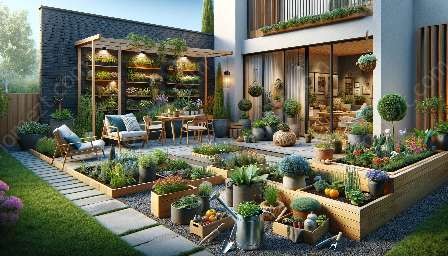As garden enthusiasts, we understand the importance of creating a safe and secure outdoor space that provides both beauty and peace of mind. In this comprehensive guide, we will explore essential garden safety tips to ensure a harmonious and enjoyable outdoor experience. We will also discuss how to integrate planting techniques and yard and patio design to enhance the safety and functionality of your garden.
Garden Safety Tips
1. Plan and Design with Safety in Mind
When creating or redesigning your garden, consider safety as a fundamental aspect of the planning process. Start by evaluating the layout of your outdoor space and identifying potential hazards such as uneven pathways, slippery surfaces, or overhanging branches. Design pathways and walkways to be well-lit, level, and free of obstacles to prevent tripping and falling hazards.
2. Choose Suitable Plants and Trees
While planning your garden, select plants and trees that are non-toxic and safe for pets and children. Be mindful of any allergenic plants and avoid placing them in high-traffic areas. Additionally, consider the growth and maintenance requirements of the plants to prevent overgrowth or encroachment on pathways and structures.
3. Proper Tool Storage and Handling
Keep all gardening tools and equipment safely stored in designated areas when not in use. Store sharp tools in a secure location and ensure they are properly maintained and kept out of reach of children. When using gardening tools, follow safe handling practices and wear appropriate protective gear to minimize the risk of accidents.
4. Secure Structures and Furniture
Inspect and secure all garden structures, such as fences, pergolas, and sheds, to ensure they are stable and safe. Check for any loose or protruding parts that could pose a hazard. When selecting outdoor furniture, prioritize stability and durability to withstand various weather conditions and provide a safe seating and resting area.
5. Implement Water Safety Measures
If your garden features water elements such as ponds, fountains, or swimming pools, take necessary precautions to ensure water safety. Install secure fences and gates around water features to prevent unauthorized access, especially for households with young children. Additionally, be mindful of proper drainage systems to prevent water accumulation that could lead to slippery surfaces.
Integrating Planting Techniques
Now that we've discussed essential garden safety tips, let's explore how planting techniques can be integrated to enhance the safety and functionality of your garden.
6. Sustainable Landscaping Practices
Implement sustainable landscaping practices such as xeriscaping, which involves using drought-tolerant plants and efficient irrigation systems to conserve water and minimize maintenance requirements. This not only promotes environmental sustainability but also reduces the need for frequent watering and maintenance, resulting in a safer and more efficient garden environment.
7. Proper Plant Spacing and Placement
When planting your garden, consider the mature size of each plant to prevent overcrowding and obstruction of pathways and structures. Proper plant spacing not only enhances the aesthetic appeal of your garden but also reduces the risk of accidents caused by overgrown or tangled vegetation.
8. Incorporate Edible Landscaping
Integrate edible plants and herbs into your garden design to create functional and visually appealing landscapes. By incorporating edible landscaping, you can foster a sustainable and safe environment while enjoying the benefits of homegrown produce. Be mindful of plant toxicity and supervise children and pets around edible plants to ensure safe consumption and handling.
Yard and Patio Design for Safety
Finally, let's explore how yard and patio design can contribute to a safe and inviting outdoor space.
9. Proper Lighting and Visibility
Illuminate your yard and patio with strategic lighting to ensure visibility and navigation during the evening hours. Install low-voltage landscape lighting to define pathways and highlight outdoor features, creating a well-lit and safe environment for evening activities.
10. Non-Slip Surfaces and Refined Hardscaping
Choose non-slip and durable materials for your patio and hardscape surfaces to prevent slipping and tripping hazards. Consider textured pavers, anti-slip coatings, and proper drainage systems to maintain safe and functional outdoor surfaces, especially in areas prone to moisture and weather exposure.
11. Child-Friendly Design Elements
For households with young children, incorporate child-friendly design elements such as play areas with soft ground coverings, sturdy handrails, and secure fencing to create a safe and engaging outdoor environment for kids to explore and play.
By following these comprehensive garden safety tips and integrating planting techniques and yard and patio design for a harmonious and safe garden environment, you can create an outdoor space that not only showcases the beauty of nature but also prioritizes the safety and well-being of everyone who enjoys it.



